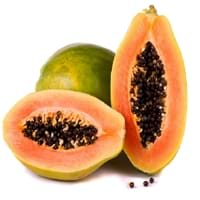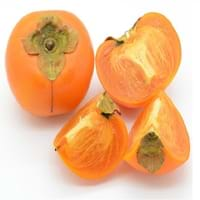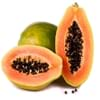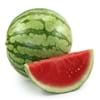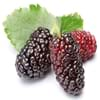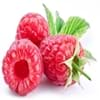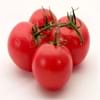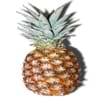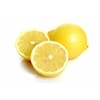Health Benefits
Arthritis prevention, Asthma treatment, Cancer prevention, Heart care, Prevents macular degeneration, Prevents rheumatoid
Cancer prevention, Heart care, Heat stroke treatment, Improves eye vision, Weight loss properties
General Benefits
Anti-inflammatory properties, Boosts immune system, Digestive aid, Healing of wounds, Maintains healthy cholesterol level, Strengthens bones
Anti-inflammatory properties, Boosts immune system, Cures cough, Digestive aid, Fights against infections, Improves blood circulation
Skin Benefits
Anti-aging benefits, Hydrates skin, Skin revitalization, Treatment of acne, Treatment of dark spots
Anti-aging benefits, Brightens and lightens complexion, Reduces wrinkles
Hair Benefits
Good conditioner, Promotes longer and healthier hair, Softening mask, Treatment of dandruff
Promotes longer and healthier hair, Protects hair
Allergy Symptoms
Abdominal pains, Carotenemia on excessive consumtion, Latex Allergy
Abdominal pains, Anaphylaxis, Inflammation
Side Effects
Allergic reaction, Skin problems, Possibly unsafe during pregnancy
Diarrhoea, Might affect blood pressure level
Best Time to Eat
As a snack in the late afternoon, Don't consume at night and before bed, Don't eat after meal
Along with meal, As a snack in the late afternoon, Don't consume at night and before bed, Morning time (before lunch)
Vitamin B5 (Pantothenic Acid)
Not Available
Vitamin C (Ascorbic Acid)
Vitamin K (Phyllochinone)
Phytosterol
Not Available
Calories in Fresh Fruit with Peel
Not Available
Calories in Fresh Fruit without Peel
Not Available
Calories in Frozen Form
Not Available
Calories in Canned Form
Not Available
Type
Melon, Tree fruit
Berry, Tree fruit
Season
All seasons
Autumn, Winter
Varieties
Coorg Honey Dew, Pusa Dwarf, Pusa Giant, Pusa Majesty, Pusa Delicious, Pusa Dwarf, Solo, Ranchi, Taiwan-785 and Taiwan-786
Fuyu, Jiro, Gosho, Suruga, Hiratanenashi, Hachiya, Aizumishirazu, Yotsumizo, Yokono, Costata, Ormond and Tamopan
Color
Orange, Yellow
Orange, Red, Yellow
Inside Color
Orange
Orange
Taste
Luscious, Sweet
Sweet
Origin
Mexico, Central America
Burma, China, India, Japan
Soil Type
Rocky, Sandy, Well-drained
Sandy loam, Well-drained
Climatic Conditions
Warm, Without frosts
Can tolerate wide range of climates
Facts about
- Papaya seeds show contraceptive effects in male monkeys.
- Their seeds are used as a replacement for black pepper in some nations due to peppery taste.
- Papaya is known by funny names like paw paw or papaw and the mamao.
- Unripe persimmons contain lots of tannin which is used to brew sake & to preserve wood in Japan.
- A small non-edible fruit of persimmon tree is crushed with water, the solution is painted on paper & used to repel mosquitoes.
Spirits
Yes
Not Available
Cocktails
Yes
Not Available
Other Countries
Brazil, Indonesia, Mexico, Nigeria
Azerbaijan, Brazil, Israel, Italy, Japan, Pakistan
Top Importer
United States of America
United States of America
Top Exporter
Mexico
Japan
Botanical Name
Carica papaya
Diospyros kaki
Synonym
Not Available
Not Available
Subkingdom
Tracheobionta
Tracheobionta
Division
Magnoliophyta
Magnoliophyta
Class
Magnoliopsida
Magnoliopsida
Subclass
Dillenhidae
Dillenhidae
Order
Brassicales
Ericales
Family
Caricaceae
Ebenaceae
Species
C. papaya
D. kaki
Generic Group
Papaya
Not Available
Difference Between Papaya and Japanese Persimmon
We might think that Papaya and Japanese Persimmon are similar with respect to nutritional value and health benefits. But the nutrient content of both fruits is different. Papaya and Japanese Persimmon Facts such as their taste, shape, color, and size are also distinct. The difference between Papaya and Japanese Persimmon is explained here.
The amount of calories in 100 gm of fresh Papaya and Japanese Persimmon with peel is Not Available and 70.00 kcal and the amount of calories without peel is 43.00 kcal and Not Available respectively. Thus, Papaya and Japanese Persimmon belong to Low Calorie Fruits and Low Calorie Fruits category.These fruits might or might not differ with respect to their scientific classification. The order of Papaya and Japanese Persimmon is Brassicales and Ericales respectively. Papaya belongs to Caricaceae family and Japanese Persimmon belongs to Ebenaceae family. Papaya belongs to Carica genus of C. papaya species and Japanese Persimmon belongs to Diospyros genus of D. kaki species. Beings plants, both fruits belong to Plantae Kingdom.
